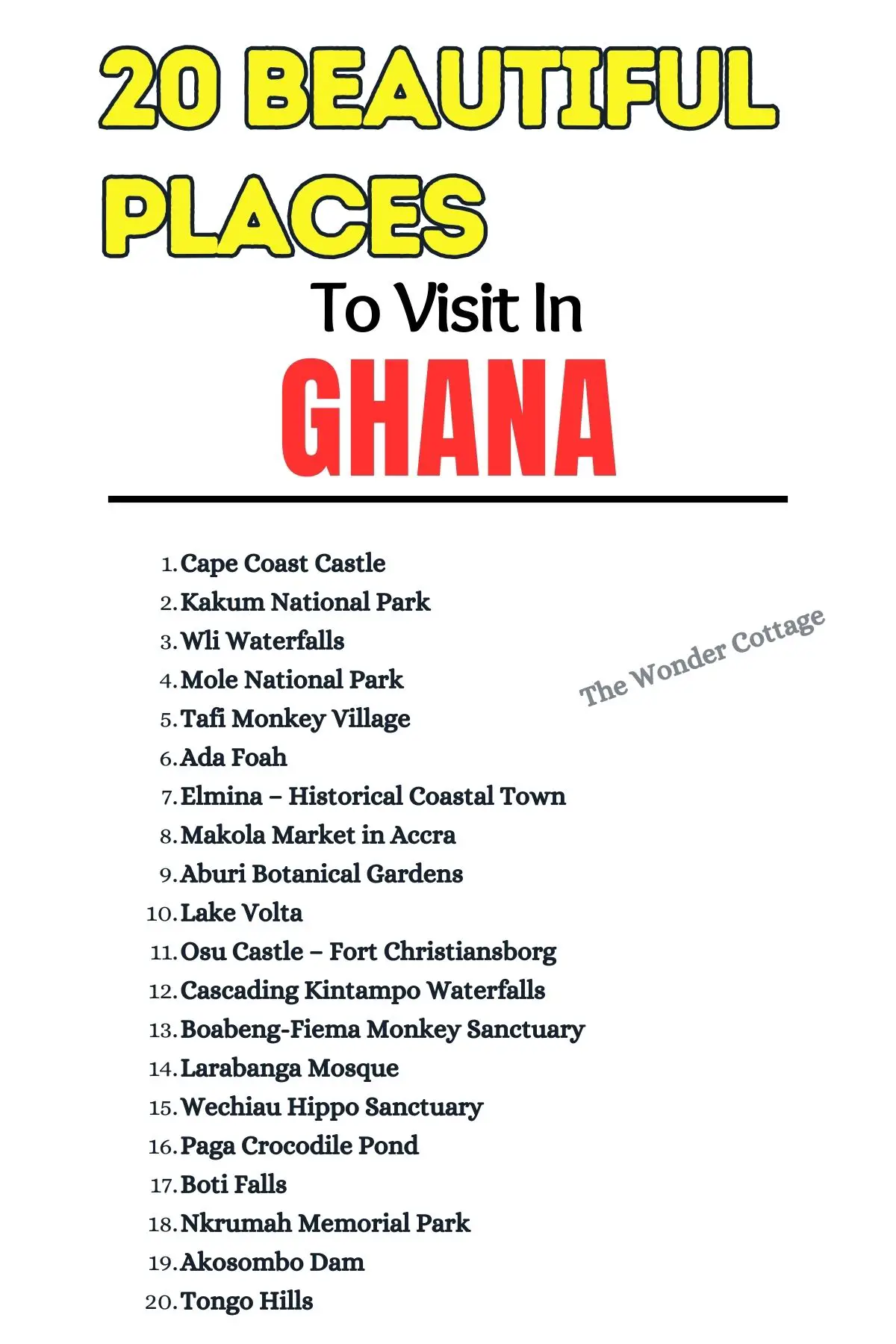Ghana, situated on the Gulf of Guinea in West Africa, is a country rich in history, culture, and natural beauty. From vibrant cities to serene landscapes, Ghana offers a diverse array of attractions that cater to every traveler’s interests.
In this guide, we will embark on a virtual journey through the 20 best places to visit in Ghana, each contributing to the country’s unique tapestry.
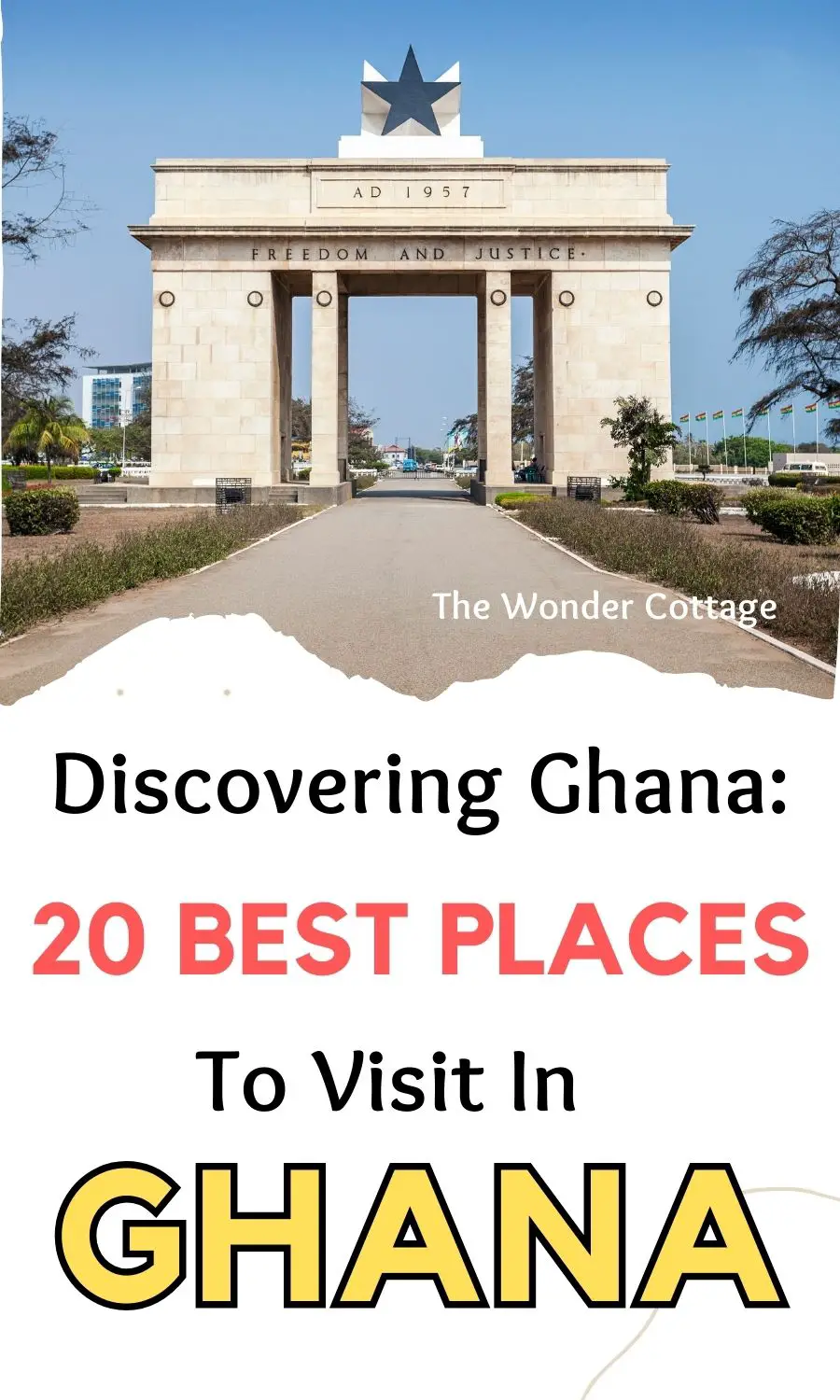
20 Beautiful Places To Visit In Ghana
1. Cape Coast Castle
Located on the central coast of Ghana, Cape Coast Castle is a UNESCO World Heritage site and a poignant reminder of the transatlantic slave trade. Explore its dark dungeons, courtyards, and museum to gain insights into Ghana’s complex history.
Cape Coast Castle was originally built by the Swedes in 1653, later expanded by the British, and became a major center for the trans-Atlantic slave trade. The castle served as a hub for the transportation of African slaves to the Americas during the 17th, 18th, and early 19th centuries. The British took control of Cape Coast Castle in 1664 and used it as their colonial headquarters for the Gold Coast (modern-day Ghana) until 1877.
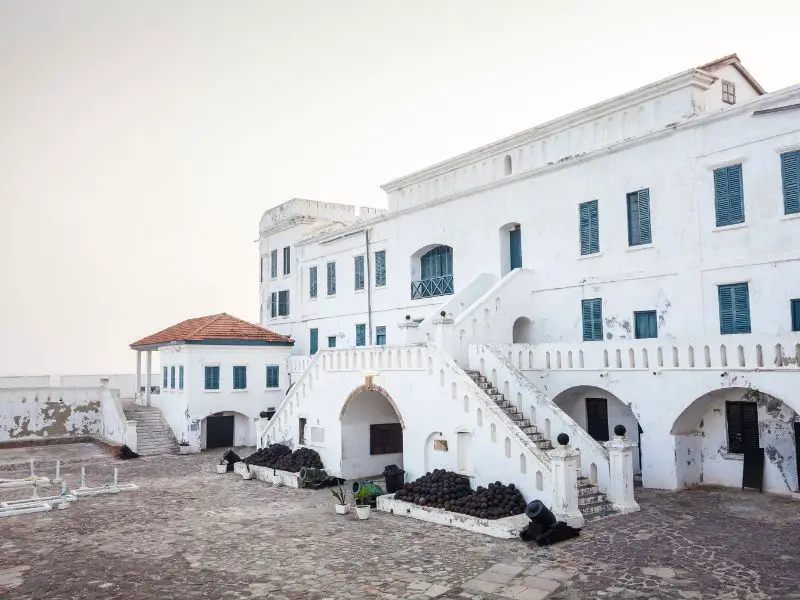
The castle is a notable example of European military architecture in Africa, featuring a mix of European and local construction styles. The infamous “Door of No Return” is a small door through which enslaved Africans were forced to board the ships destined for the Americas. It symbolizes the irreversible journey into slavery.
Today, Cape Coast Castle operates as a museum and memorial, documenting the history of the slave trade and its impact on Africa and the African diaspora. The castle has undergone various restoration efforts to preserve its historical significance, including the restoration of the cannon platforms and some of the interior spaces.
Cape Coast Castle hosts memorial services and events to honor the memory of those who suffered during the slave trade. These events attract visitors from around the world. The castle is a powerful symbol of Ghana’s cultural heritage and its efforts to remember and learn from the painful history of the trans-Atlantic slave trade.
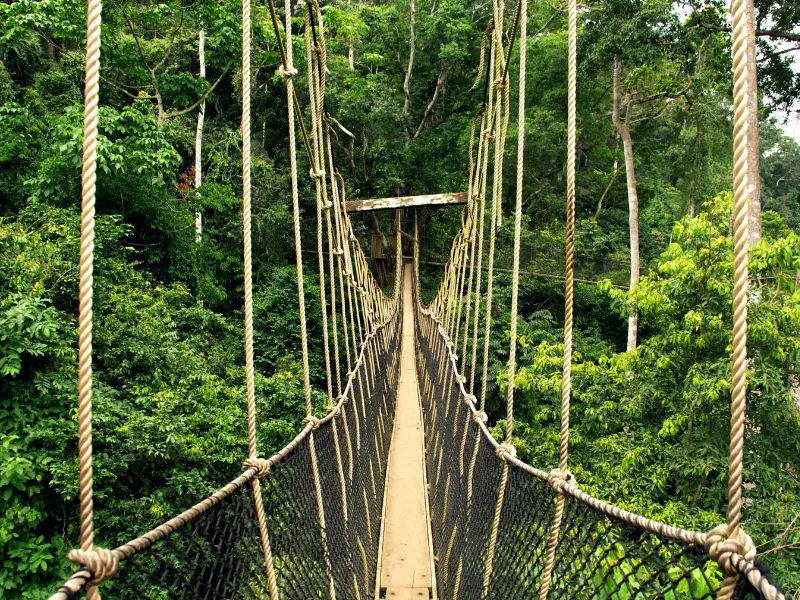
2. Kakum National Park
Kakum National Park is a tropical rainforest reserve located in the central region of Ghana. It is known for its rich biodiversity and the unique canopy walkway that offers visitors a stunning view of the forest.
Immerse yourself in nature at Kakum National Park, famous for its canopy walkway suspended high above the rainforest floor. This park also boasts diverse wildlife and offers an opportunity to appreciate Ghana’s lush greenery.
One of the highlights of Kakum National Park is its canopy walkway, which is suspended about 30 meters (98 feet) above the forest floor. It consists of seven bridges and provides visitors with a unique perspective of the rainforest.
The park is home to a diverse range of plant and animal species, including over 400 bird species, 600 butterfly species, and various mammal species such as forest elephants, forest buffalo, and primates. The rainforest within Kakum National Park contains numerous medicinal plants that have been traditionally used by local communities for various health purposes. Guided tours often provide insights into the medicinal properties of these plants.
Kakum National Park covers an area of about 375 square kilometers (145 square miles), making it one of the largest rainforest reserves in Ghana. The park plays a crucial role in the conservation of Ghana’s biodiversity. Efforts are made to protect endangered species and their habitats within the park.
The area surrounding Kakum National Park is rich in cultural heritage, with nearby communities having unique traditions and practices. Guided tours sometimes incorporate elements of local culture, allowing visitors to experience the cultural diversity of the region.
In addition to the canopy walkway, the park offers several hiking trails that allow visitors to explore the lush rainforest and encounter its diverse flora and fauna. Kakum National Park has a well-developed visitor center that provides educational information about the rainforest, its ecosystems, and the importance of conservation.
The park is easily accessible from Cape Coast, one of Ghana’s prominent coastal cities. This makes it a popular destination for both local and international tourists. Some tour operators offer night walks within the park, providing a unique opportunity to experience the rainforest’s nocturnal activities and observe creatures that are more active during the night.
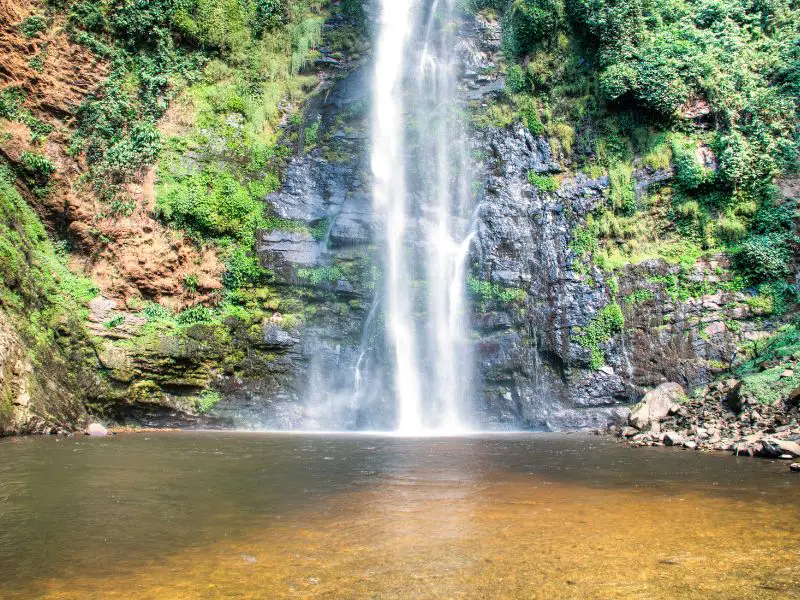
3. Wli Waterfalls
Tucked away in the Volta Region, Wli Waterfalls is the highest waterfall in West Africa. The journey to the falls involves a scenic trek through the forest, making it an adventure for nature enthusiasts.
Wli Waterfalls is often referred to as “Twin Falls” because it consists of two main falls, known as the Upper Fall and the Lower Fall. The Upper Fall is the taller of the two, cascading down from a height of about 80 meters (262 feet), while the Lower Fall is slightly shorter but equally picturesque. The sight of these twin waterfalls adds to the natural beauty and charm of the Wli area.
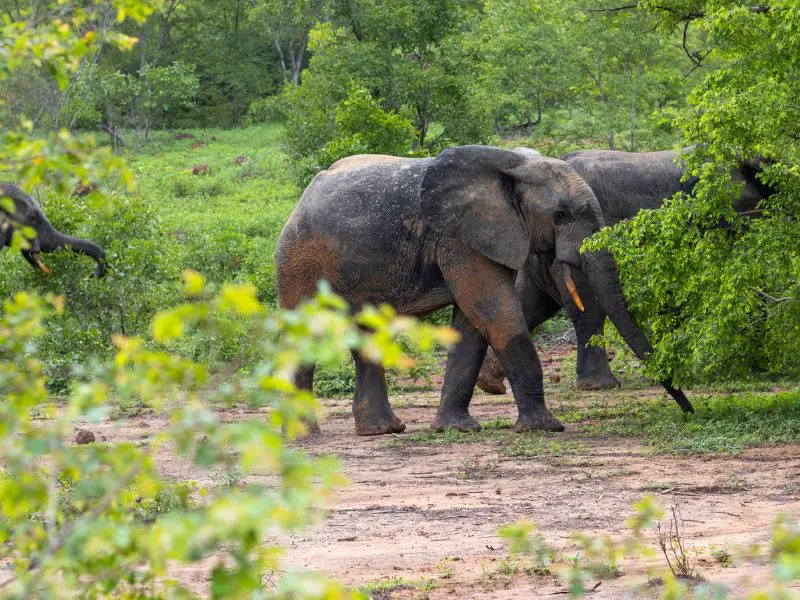
4. Mole National Park
For a safari experience, head to Mole National Park in the savannah region. Encounter antelopes, and various bird species on guided tours or from the comfort of the park’s lodges. Mole National Park is renowned for its Elephant Sanctuary, which is one of the few places in West Africa where you can find a significant population of elephants.
The park is home to over 600 elephants, making it a key conservation area for these majestic creatures. Visitors to the park have the opportunity to embark on safaris and witness these elephants in their natural habitat.
The presence of elephants in Mole National Park adds to the park’s significance as a biodiversity hotspot in the region.
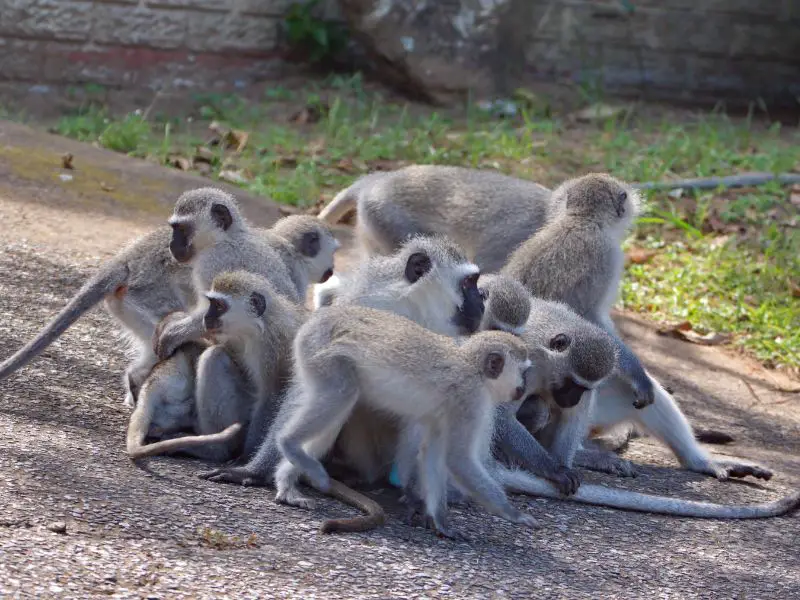
5. Tafi Monkey Village
Nestled in the lush landscapes of the Volta Region of Ghana, the Tafi Monkey Village stands as a captivating testament to the harmonious coexistence of humans and nature. A visit to this enchanting village offers travelers a unique opportunity to witness the playful antics of our primate cousins and immerse themselves in the rich cultural tapestry of the Ewe people.
Tafi Monkey Village is renowned for its resident Mona monkeys, who have become an integral part of the community. As you explore the village, you’ll encounter these lively creatures freely roaming the area, showcasing their acrobatic prowess and providing delightful entertainment for visitors.
Beyond its monkey inhabitants, Tafi offers a profound cultural experience. Engage with the friendly Ewe community and gain insights into their traditional way of life. The villagers are welcoming, eager to share stories, and proud to showcase their customs, making your visit a truly immersive cultural exchange.
Tafi Monkey Village stands as a beacon for conservation efforts in Ghana. The local community has embraced the responsibility of protecting and preserving the monkeys and their habitat. Learn about the initiatives taken to ensure the welfare of these primates and the delicate balance between human development and wildlife conservation.
Embark on a journey to Tafi Monkey Village, where the rustling leaves and playful chatter of the monkeys create a symphony of nature and culture. It’s a destination that not only captures your heart but leaves an indelible mark on your travel memories.
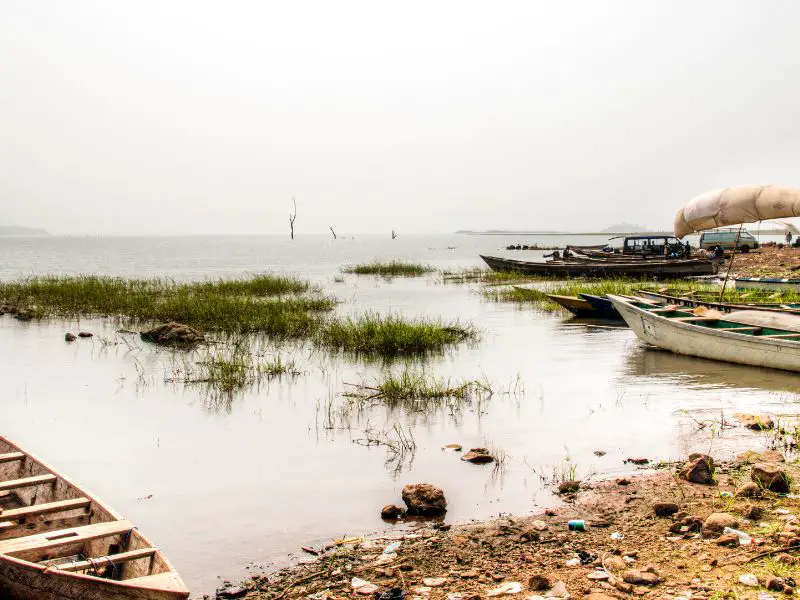
6. Ada Foah
Ada Foah, located at the estuary of the Volta River, offers a tranquil escape. Enjoy river cruises, visit the Ada Caves, and explore the town’s unique blend of traditional and colonial architecture. Ada Foah is known for its unique setting on the Volta River, where it is surrounded by riverine islands. These islands offer a serene and picturesque environment, making Ada Foah a popular destination for those seeking a peaceful getaway.
The area provides opportunities for boat rides, fishing, and other water-related activities, allowing visitors to enjoy the natural beauty of the Volta River estuary. This riverside location gives Ada Foah a distinctive charm, making it an ideal destination for relaxation and water-based recreation.
The peaceful atmosphere and scenic surroundings make it a sought-after spot for both locals and tourists looking to escape the hustle and bustle of urban life.
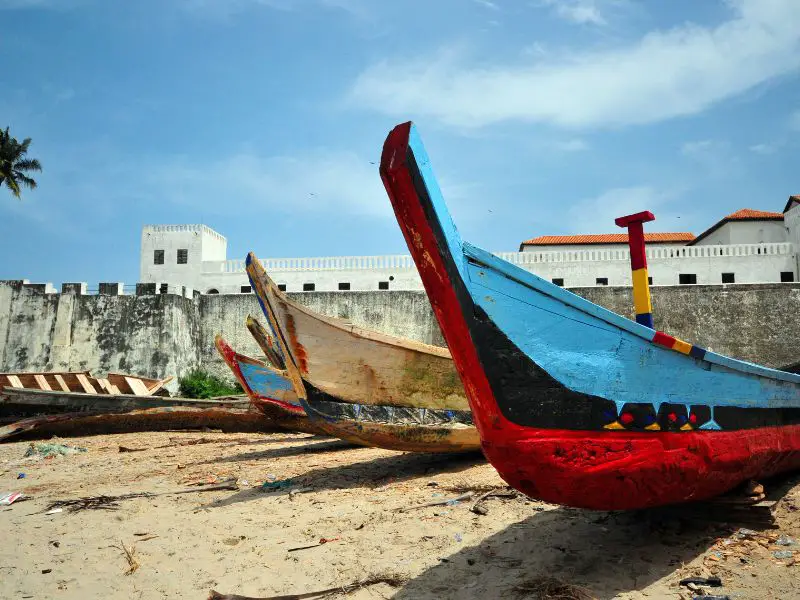
7. Elmina – Historical Coastal Town
Explore the town’s fishing harbor and witness the vibrant local culture. Elmina is home to St. George’s Castle, also known as Elmina Castle, which is the oldest European building in sub-Saharan Africa. The castle was constructed by the Portuguese in 1482 and later expanded by the Dutch.
Elmina played a crucial role in the trans-Atlantic slave trade. The castle served as a trading post where European powers, including the Portuguese and the Dutch, conducted business, including the exchange of goods and slaves.
Elmina Castle was a key site for the shipment of enslaved Africans to the Americas. The dungeons within the castle held captives before they were transported across the Atlantic. Elmina Castle, along with other forts and castles along the Ghanaian coast, was designated as a UNESCO World Heritage Site in 1979. These sites are recognized for their historical significance and role in the trans-Atlantic slave trade.
Apart from its historical importance, Elmina is known for its vibrant fishing industry. The town has a bustling fish market where locals engage in the trade of fresh seafood. Elmina has a rich cultural heritage, with a blend of indigenous Ghanaian culture and the influence of European colonial history. The town’s architecture, traditions, and festivals reflect this cultural amalgamation.
Elmina hosts the Bakatue Festival annually to celebrate the reopening of the Benya Lagoon to the sea. The festival is characterized by colorful processions, traditional ceremonies, and cultural performances.
Related Posts
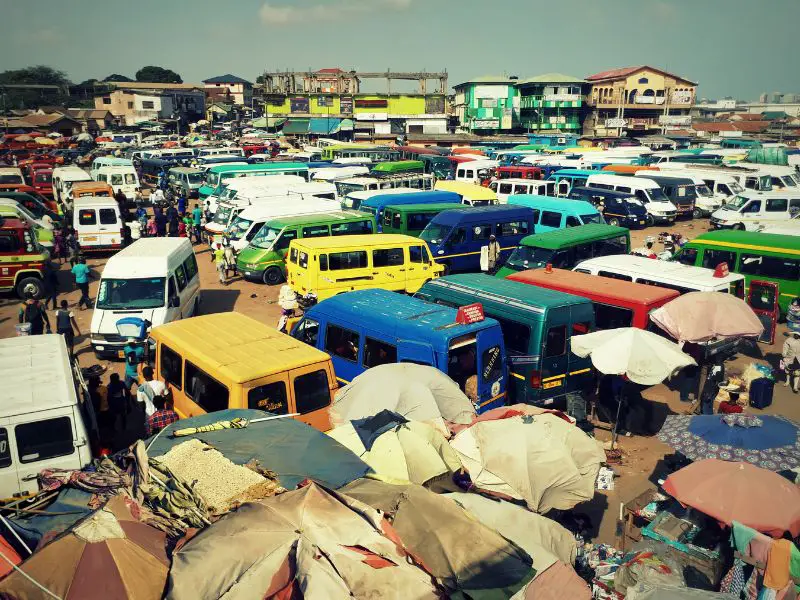
8. Makola Market in Accra
Dive into the heart of Accra’s bustling Makola Market, a sensory explosion of colors, sounds, and aromas. This market is a microcosm of Ghanaian life, offering everything from fresh produce to traditional crafts. Makola Market has a long history and has been a central trading point in Accra for decades. It has witnessed the growth and development of the city over the years.
The market offers a wide variety of goods, including fresh produce, spices, textiles, clothing, household items, and traditional crafts. It is a one-stop destination for both locals and tourists looking for a range of products.
Makola Market is known for its lively and energetic atmosphere. The market is always abuzz with activity, with vendors calling out to customers, bargaining, and the general hustle and bustle of a busy marketplace. The market is a testament to the entrepreneurial spirit of the people of Accra. Many small businesses operate within the market, contributing to the local economy.
Makola Market is notable for the significant presence of women traders. Women play a crucial role in the market’s activities, managing their stalls and contributing to the overall economic vitality of the area.
The market is centrally located in Accra, making it easily accessible to residents and visitors. It is situated near the Kwame Nkrumah Mausoleum and other prominent landmarks, making it a strategic commercial center in the city.
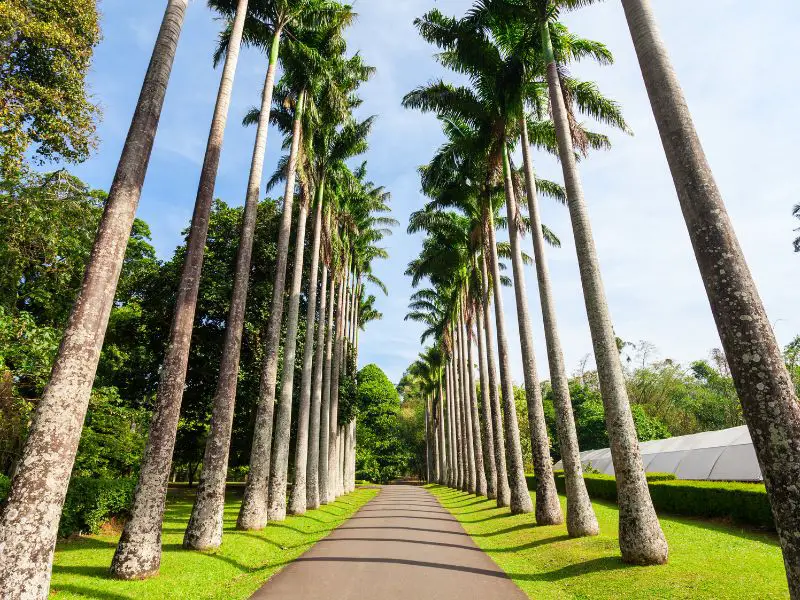
9. Aburi Botanical Gardens
Escape the hustle and bustle in the serene surroundings of Aburi Botanical Gardens. Located in the Eastern Region, this oasis is known for its lush greenery, scenic trails, and diverse plant species. The Aburi Botanical Gardens was established in 1890 by the then-British governor, Sir William Brandford-Griffith, as a recreational park and a source of plant species for experimental purposes.
The gardens are situated at an altitude of about 370 meters (1,214 feet) above sea level, providing a cooler and more temperate climate compared to the surrounding lowlands. The botanical gardens are home to a wide variety of plant species, including tropical and subtropical plants, ornamental flowers, medicinal plants, and indigenous trees. The gardens cover an area of about 64.8 hectares (160 acres).
One of the highlights of the gardens is a massive African Mahogany tree (Khaya senegalensis) known as the “Big Tree.” It is an iconic feature and a popular spot for visitors. Aburi Botanical Gardens houses a Cocoa Museum, providing information about the cultivation and processing of cocoa, a significant agricultural product in Ghana.
The gardens are a haven for birdwatchers, offering opportunities to observe a variety of bird species in a natural setting. The gardens showcase a rich diversity of flora, including ferns, orchids, palms, and various tropical and subtropical plants. Visitors can explore themed sections such as the Palm Walk, the Fernery, and the Succulent Garden.
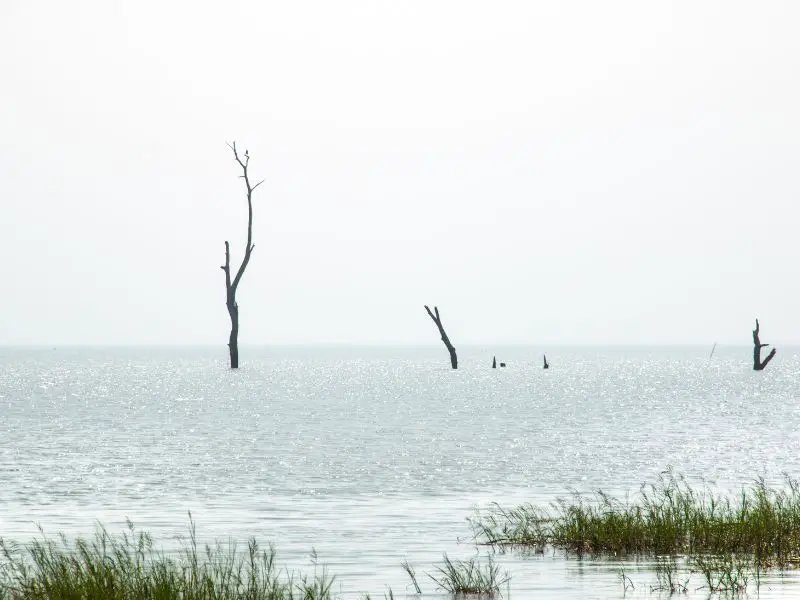
10. Lake Volta
As one of the largest artificial lakes globally, Lake Volta is a sight to behold. Explore the lakeside villages, embark on boat cruises, and witness the stunning landscapes surrounding this expansive body of water.
Lake Volta covers an area of about 8,502 square kilometers (3,283 square miles) and extends over 400 kilometers (250 miles) in length. It was created as a result of the construction of the Akosombo Dam on the Volta River.
This massive reservoir not only serves as a source of hydroelectric power for Ghana but also has a significant impact on the local environment and economy. The creation of Lake Volta involved the flooding of vast areas, leading to the displacement of communities and the formation of an expansive water body with numerous islands and peninsulas.
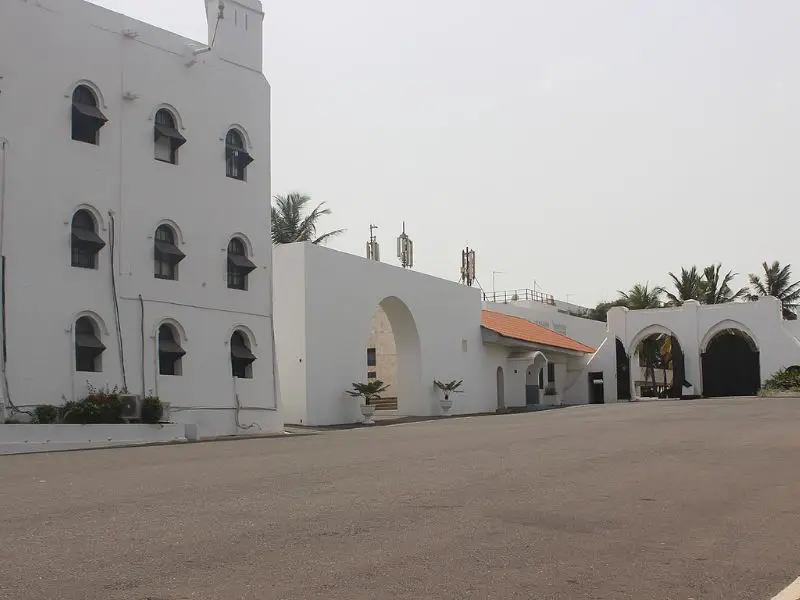
11. Osu Castle – Fort Christiansborg
Situated in Accra, Osu Castle, also known as Fort Christiansborg, has served various purposes throughout history. Visit the castle to explore its museums, and dungeons, and experience a blend of Ghana’s past and present.
Construction of Osu Castle began in the 1660s by the Danish, and it served as a trading post. Over the centuries, it changed hands between the Danish, Swedish, and British, who eventually became the predominant colonial power in the region.
During the colonial period, Osu Castle became the seat of government for the British Gold Coast colony. It continued to be a center of political power after Ghana gained independence in 1957. Osu Castle served as the official residence for Ghana’s presidents until 2013 when the seat of government was relocated to the Jubilee House (Flagstaff House) in Accra.
The name “Osu Castle” is often used to refer to the structure in contemporary times. However, it is officially known as Fort Christiansborg. The term “castle” is a common descriptor for historical European-built forts along the Ghanaian coast. Osu Castle played a pivotal role in the trans-Atlantic slave trade, serving as a holding area for enslaved Africans before they were transported to the Americas.
Along with other forts and castles along the Ghanaian coast, Osu Castle was designated as a UNESCO World Heritage Site in 1979. These sites are recognized for their historical significance and their role in the trans-Atlantic slave trade.
While the castle was historically a government facility, portions of it have been open to the public for tours, allowing visitors to explore its history, dungeons, and architecture.
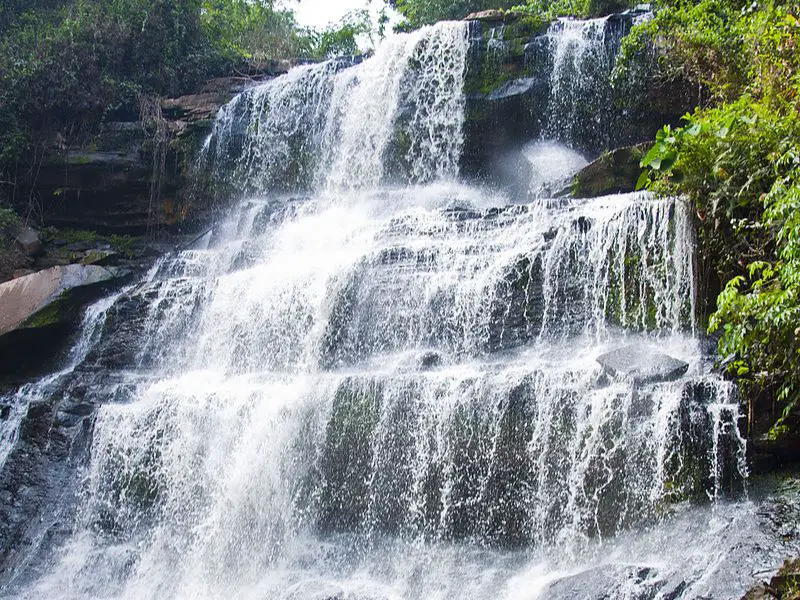
12. Cascading Kintampo Waterfalls
Nestled in the Brong-Ahafo Region, the Kintampo Waterfalls is a series of stunning cascades. Surrounded by lush vegetation, these waterfalls offer a refreshing stop for travelers journeying through Ghana. The Kintampo Waterfalls is situated on the Pumpum River, a tributary of the Black Volta, and is surrounded by lush tropical rainforests.
The waterfall cascades down in three main streams over a height of about 25 meters (82 feet), creating a picturesque and serene environment. At the base of the falls, there is a large natural swimming pool formed by the cascading water. Visitors often enjoy taking a refreshing dip in the pool, making it a popular spot for relaxation.
The waterfall is surrounded by interesting rock formations, adding to the scenic beauty of the area. The rocks provide natural seating areas for visitors to enjoy the view of the falls. The Kintampo Waterfalls are easily accessible, making it a popular destination for both locals and tourists. It’s a great spot for nature lovers and those seeking a peaceful escape.
The area around Kintampo Waterfalls is home to a baboon sanctuary. Visitors might encounter these monkeys in the surrounding forest, adding a touch of wildlife to the experience.

13. Boabeng-Fiema Monkey Sanctuary
Encounter over 600 Mona and Patas monkeys at the Boabeng-Fiema Monkey Sanctuary. These friendly creatures roam freely, often interacting with visitors. It was established in 1975 and was the first monkey sanctuary in Ghana. The sanctuary covers an area of approximately 5 square kilometers.
It is home to two different types of monkeys, the Mona monkeys and the Campbell monkeys. The Mona monkeys are known for their striking black and white fur and long tails, while the Campbell’s monkeys have a greyish coat and distinctive white beard.
The monkeys in the sanctuary are believed to be sacred by the local community and are protected by traditional customs and taboos. The sanctuary is also home to several other species of wildlife, including antelopes, squirrels, and various bird species. Visitors to the sanctuary can observe the monkeys in their natural habitat and learn about their behavior and conservation efforts.
The sanctuary also has a museum that showcases the history, culture, and biodiversity of the area. Boabeng-Fiema Monkey Sanctuary is a popular tourist attraction in Ghana, drawing visitors from all over the world who are interested in wildlife and conservation.
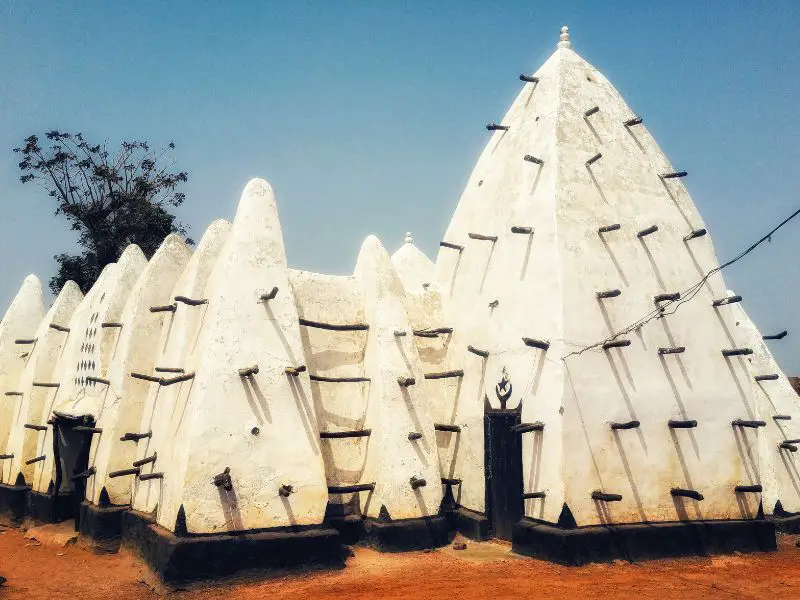
14. Larabanga Mosque
Visit the Larabanga Mosque, one of the oldest mosques in West Africa, built in the 15th century. Admire its stunning Sudanese architectural style and explore its rich Islamic history.
The Larabanga Mosque is one of the oldest mosques in West Africa, believed to have been built in the 15th century. Its age and unique architecture make it a significant historical and cultural site. The mosque is built in the Sudano-Sahelian architectural style, characterized by the use of mud and stick construction. The distinctive adobe walls and timber supports contribute to the mosque’s unique appearance.
According to local legend, the Larabanga Mosque was built by an Islamic trader with the help of the local spirits or angels. The legend claims that the mosque was constructed overnight, adding a mystical and enchanting aspect to its history.
The mosque is considered a sacred site, and many people believe it has spiritual and healing properties. It attracts both Muslim and non-Muslim visitors who seek blessings and divine intervention. The Larabanga Mosque is not only a religious site but also a cultural landmark.
It reflects the rich history and Islamic heritage of the region, attracting scholars, tourists, and researchers interested in its architectural and cultural significance. The Larabanga Mosque has been considered as a potential candidate for inclusion in UNESCO’s World Heritage List due to its historical importance and unique architectural features
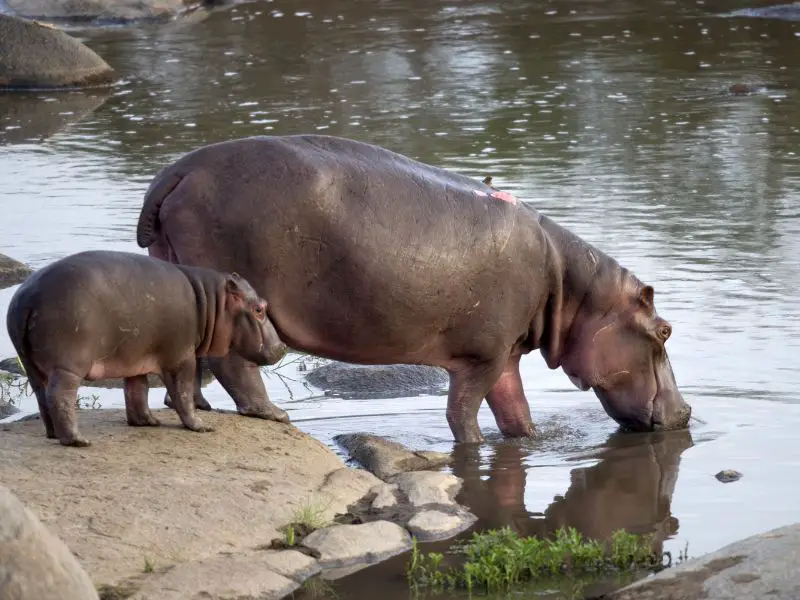
15. Wechiau Hippo Sanctuary
Embark on a boat safari at the Wechiau Hippo Sanctuary, where you can spot hippos lounging in their natural habitat along the Black Volta River. The primary goal of the sanctuary is to conserve the hippopotamus population in the area. The sanctuary covers about 40 kilometers along the Black Volta River and provides a protected environment for hippos to live and breed.
The Wechiau Community Hippo Sanctuary is a community-led initiative. The local communities around the sanctuary actively participate in the management and protection of the area. This model encourages sustainable conservation practices while involving and benefiting the local people.
The sanctuary not only protects hippos but also encompasses a diverse ecosystem, including riverine forests and savannah grasslands. Visitors to the sanctuary have the opportunity to experience and appreciate the unique biodiversity of the region.
In addition to hippos, the sanctuary is a haven for birdwatchers. The diverse habitats within the sanctuary attract a variety of bird species, making it a great destination for bird enthusiasts. The Wechiau area is rich in cultural heritage, and the sanctuary is integrated into the local traditions and beliefs. The hippos are considered sacred by the local people, and there are cultural taboos against harming them.
The sanctuary serves as a tourist attraction, drawing visitors interested in ecotourism and wildlife conservation. It also provides educational programs to raise awareness about the importance of conserving natural habitats and wildlife.
Visitors to the sanctuary can take guided boat safaris along the Black Volta River to observe hippos in their natural habitat. These boat safaris offer a unique and safe way to experience the wildlife of the region.
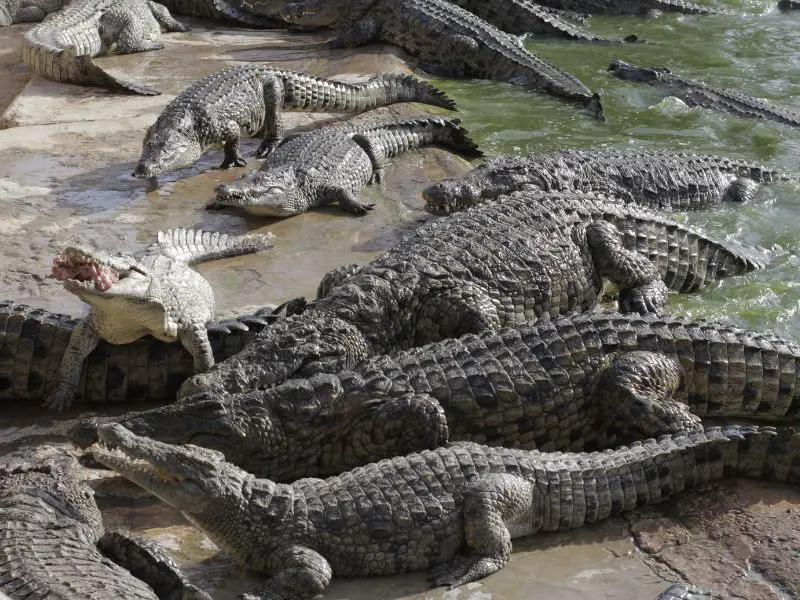
16. Paga Crocodile Pond
Encounter the extraordinary at Paga Crocodile Pond, where you can get up close and personal with crocodiles that coexist peacefully with humans. The crocodiles are considered sacred in the local culture and are even fed by the residents. The crocodile pond is home to over 100 live crocodiles, making it one of the largest crocodile sanctuaries in the region.
The crocodiles at Paga Crocodile Pond are believed to be sacred and are treated with great reverence by the local people. They are considered to be the reincarnated souls of departed ancestors. Visitors to Paga Crocodile Pond can have a unique and thrilling experience of getting up close with the crocodiles. They can touch and even sit on the backs of these giant creatures without any harm.
The crocodiles at Paga Crocodile Pond are habituated to humans and have grown accustomed to being fed by locals and tourists alike. The crocodile handlers at Paga Crocodile Pond have developed a special bond with the reptiles. They can call out individual crocodiles by name and get them to perform tricks such as opening their mouths or lifting their heads.
Paga Crocodile Pond is a popular tourist destination in Ghana, attracting visitors from all over the world who come to witness the incredible sight of humans interacting peacefully with crocodiles. The pond is also believed to have healing powers, and some locals and tourists visit the pond to seek blessings and good fortune by performing rituals and offerings.
Paga Crocodile Pond has become an essential part of the cultural heritage of the local people, and they take pride in preserving and protecting these animals. The crocodile pond is not just a tourist attraction but also an important conservation effort to save the vulnerable Nile Crocodile species from extinction in the region.
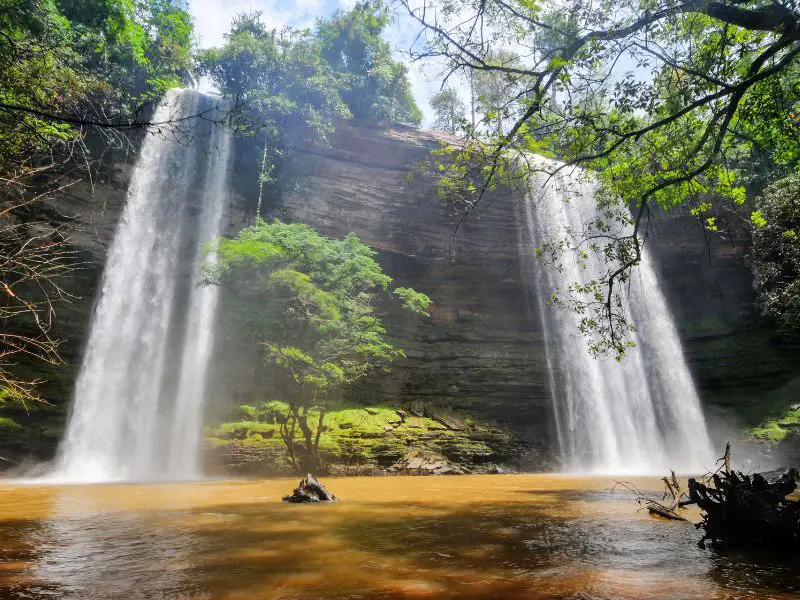
17. Boti Falls
Experience the magnificence of Boti Falls, a twin waterfall located in the Eastern Region. Hike through the beautiful landscapes, witness the powerful cascades, and cool off with a refreshing swim. One of the distinctive features of Boti Falls is that it consists of two main waterfalls – the upper falls and the lower falls. The two falls are separated by some distance and have different characteristics.
Near the falls, there is a large rock formation that resembles an umbrella. This rock is locally known as “Umbrella Rock” and adds to the picturesque landscape around Boti Falls. Boti Falls is particularly impressive during the rainy season when the volume of water flowing down the falls is at its peak. The increased water flow creates a spectacular display of nature’s power and beauty.
Boti Falls holds cultural and spiritual significance for the local people. It is considered a sacred site, and there are traditional rituals and ceremonies associated with the falls. Local communities often visit the falls for spiritual purposes.
Boti Falls is a popular tourist destination, attracting visitors who seek both the natural beauty of the falls and the cultural experiences associated with the site. Tourists can hike to the falls and enjoy the surrounding scenery.
The falls are relatively accessible, making it a feasible day trip from the capital city, Accra. The journey to Boti Falls takes visitors through lush landscapes and rural areas, providing a glimpse of rural life in Ghana.
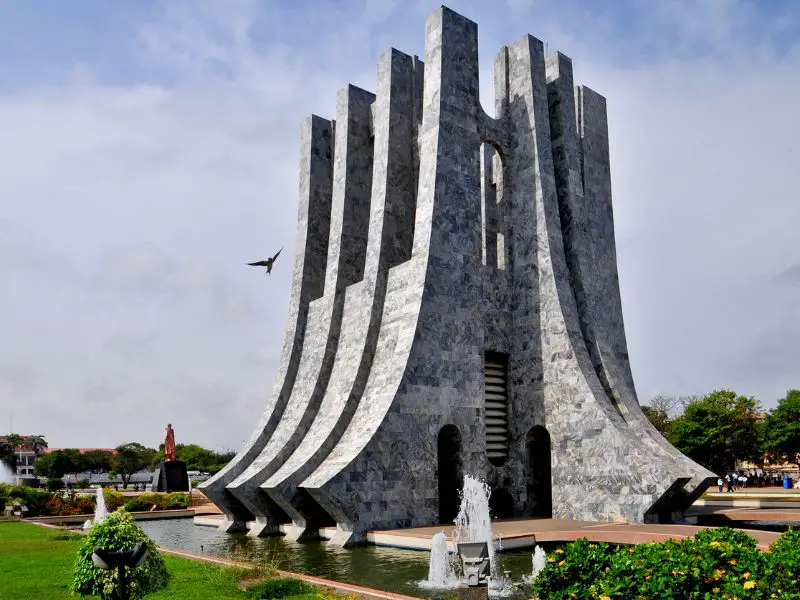
18. Nkrumah Memorial Park
The Kwame Nkrumah Mausoleum, located in Accra, Ghana, is a memorial park dedicated to Kwame Nkrumah, the first President of Ghana and a key figure in the country’s fight for independence.
The Kwame Nkrumah Mausoleum is not only a monument but also the final resting place of Kwame Nkrumah and his wife, Fathia Nkrumah. The mausoleum serves as a symbolic representation of Nkrumah’s legacy and his significant contributions to Ghana’s independence movement.
Visitors to the park can explore the mausoleum, which includes a museum with exhibits showcasing Nkrumah’s life, achievements, and the history of Ghana’s struggle for independence. The park also features a statue of Nkrumah, standing with his hand raised, symbolizing the call for unity and progress.
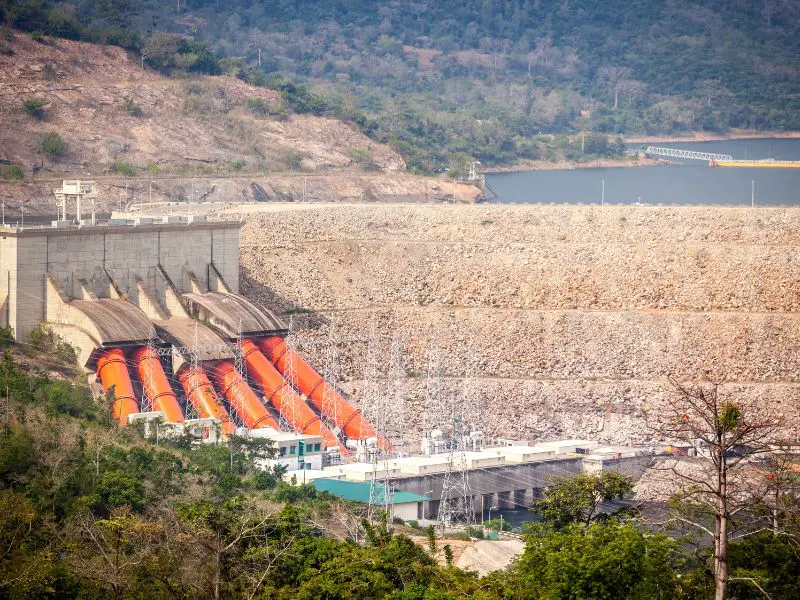
19. Akosombo Dam
Ghana, a land of vibrant culture and natural beauty, is home to the Akosombo Dam—a marvel of engineering and a place that beckons both history enthusiasts and nature lovers alike. Nestled in the Eastern Region, the Akosombo Dam is not just a source of hydroelectric power; it’s a captivating destination offering a unique blend of technological achievement and breathtaking scenery.
The Akosombo Dam is a hydroelectric dam located on the Volta River in southeastern Ghana. It is a significant infrastructure project that has had a notable impact on the country’s power generation and economic development.
The Akosombo Dam is situated near the town of Akosombo in the Eastern Region of Ghana. It spans the Volta River and creates Lake Volta, one of the world’s largest artificial lakes. The construction of the Akosombo Dam began in 1961 and was completed in 1965. The dam was officially commissioned on January 22, 1966.
One of the primary purposes of the Akosombo Dam is to generate hydroelectric power. The dam has a total installed capacity of about 1,020 megawatts, making it a crucial source of electricity for Ghana. The dam created Lake Volta, which is one of the largest reservoirs in the world. The lake covers an extensive area and has become a valuable resource for fishing, transportation, and irrigation.
Take a guided tour to discover the engineering brilliance behind the Akosombo Dam. Learn about the dam’s construction, the international collaboration that made it possible, and the pivotal role it played in Ghana’s quest for industrialization. Witness the intricate mechanisms that convert the power of the Volta River into electricity that lights up the nation.
Visiting the Akosombo Dam isn’t just a journey into the heart of Ghana’s energy production; it’s an exploration of a nation’s resilience, progress, and the harmonious coexistence of technology and nature. Come, be a part of this unique experience, and witness the power and majesty of the Akosombo Dam in the heart of West Africa
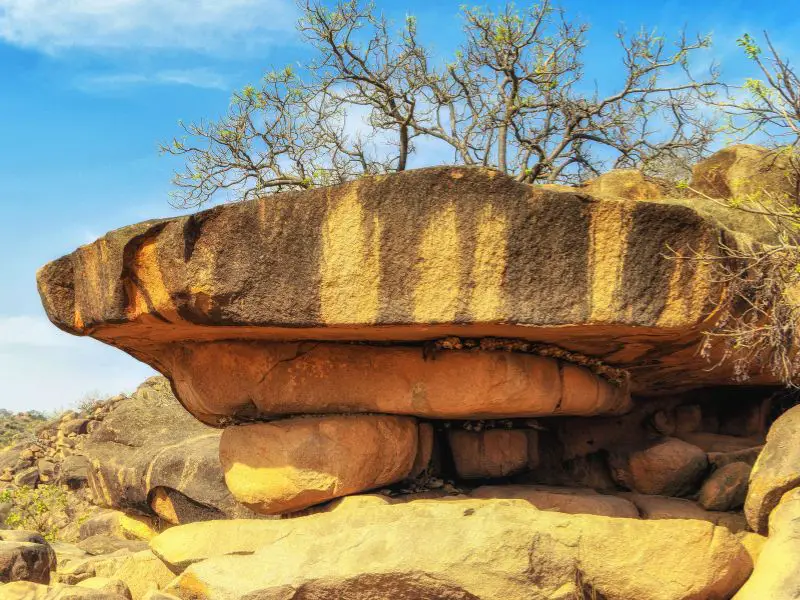
20. Tongo Hills
Tongo Hills, located in the Upper East Region of Ghana, is a unique and culturally rich area characterized by its distinctive rock formations and spiritual significance. Tongo Hills has evidence of ancient human settlements dating back thousands of years. The area is known for its historical and archaeological significance, with artifacts suggesting human activity in the region since the Stone Age.
The hills are dotted with massive granite rock formations that are considered sacred by the local Talensi people. These rocks have spiritual significance and are associated with traditional rituals and ceremonies. Tongo Hills is home to the Tengzug Shrine, a sacred site where the Talensi people worship and perform rituals. The shrine is nestled among the rocks and serves as a cultural and spiritual center for the community.
Some of the rocks in Tongo Hills feature ancient rock art, providing a glimpse into the artistic expressions of past generations. The rock art includes carvings and paintings that convey cultural and spiritual themes.
The hills are deeply ingrained in the traditional beliefs of the Talensi people. The rock formations are believed to house spirits, and rituals are performed to communicate with these spirits for various purposes, including seeking protection and blessings.
Tongo Hills is part of the Gologo Community Resource Management Area (CREMA), an initiative that aims to balance conservation with sustainable resource use, ensuring the well-being of the local communities while preserving their natural and cultural heritage.
Tongo Hills has gained recognition as a tourist destination, attracting visitors interested in cultural experiences, eco-tourism, and adventure. Guided tours offer insights into the local traditions, rituals, and geological wonders of the area.
Visiting Tongo Hills provides an opportunity to explore the intersection of culture, spirituality, and natural beauty, making it a fascinating destination for those seeking a unique and enriching travel experience.
Conclusion
Ghana, with its rich history, vibrant culture, and diverse landscapes, offers a myriad of experiences for travelers. From the solemn reminders of the slave trade to the lush greenery of national parks, each destination contributes to the multifaceted identity of this West African gem.
Whether you seek history, adventure, or relaxation, Ghana’s 20 best places to visit promise a journey filled with discovery, authenticity, and the warm hospitality that defines this captivating country.
